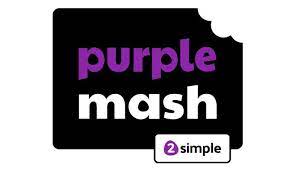Welcome to Swallows class page
Ms Sarwar, Miss Gray, Miss Pearce, Mrs Acri and Miss Sobczyk
Key days to remember:
- PE will be on Tuesday and Wednesday. Please ensure children wear their PE kit to school.
- Spellings will be given out on Mondays and spelling tests will take place on Fridays.
- Homework will be issued on Fridays and children will need to return their completed homework by the following Friday.
Parent Meeting 18th September 2024
Home Learning
Spellings
Children will be given spellings on a Monday. Please spend some time learning these with your child to support their learning in school.
Reading
Please continue to read with your child as much as possible (we recommend just a few minutes every day). If you read at home - remember to sign/tick the reading diary to say you have done so (with a comment if possible).
They will recieve stamps for every time they read which will add up to a prize from Mrs Lewis if they read consistently
There are more books on Oxford Owl which can be read online.
https://www.oxfordowl.co.uk/for-home/find-a-book/library-page/
Numbots
Your child will have their Numbots login in front of their reading record. This online game supports children's mathematical skills and we recommend playing at home if possible. The children also have the opportunity to play in school.
Purple Mash

We will set activities on Purple Mash as further optional homework activities which will be linked to our learning in school. Your child's login can be found in the front of their reading record.
Online games to support learning
Hit the button - practice number bonds to 5, 10, 20, and 100.
Year 2 SPaG ideas to use at home
Year 2 Curriculum Overview
What we are learning this term
English
In English, we will read the story 'Somebody Swallowed Stanley’ by Sarah Roberts, which is about a plastic bag that ends up in the ocean. This story shares a message about the danger of plastic in the ocean. We will then read an instruction text titled 'How to stop plastic bags entering the ocean'. The text will explain what could be made for Stanley to relax on, so he is not a danger to the animals in the ocean. We will later explore the different features shown within the text and rewrite these features through short bursts of shared writing.
Maths
In Maths we will be looking at statistics. We will learn about the different ways that data can be collected and use tally charts, pictograms and bar charts to represent this data. We will also explore how to interpret and understand the data represented. As the weeks progress, we will move on to learning about telling the time, building on their existing knowledge and applying it in different ways. Towards the end of the term, we will be revisiting and consolidating all the key concepts covered so far, ensuring the children are confident and well-prepared as they continue their maths journey.
Science
In Science, the children will be learning all about habitats and the fascinating ways animals and plants are suited to the environments they live in. They will explore a variety of habitats—from woodlands and oceans to deserts and polar regions—investigating how living things depend on each other for survival. Through hands-on activities, discussions, and observations, the children will develop a deeper understanding of the natural world and the importance of protecting different habitats across the globe.
Seaside
This term the children will be learning about the Seaside. The children will be involved in a range of activities which think about the physical and human features of the Seaside. What the seaside was like in the past compared to now and the types of activities that children and adults can enjoy whilst at the seaside.
Phonics
The children are taught discrete phonics lessons everyday following the Twinkl Phonics program which is a DfE approved programme. We teach the children the sounds in order for them to read and write with increasing proficiency. At the end of Year 1 the children completed a Phonics Screening Check which is a legal requirement for each child. They will apply their phonics knowledge to read 40 words, 20 of which are real and 20 which are not (we call these alien words).
In Year 2, we will continue to build on children's phonics knowledge from reception and year 1. Children will have lessons tailored to meet their individual needs and next steps.
There is more information about the Phonics Screening Check here:
https://www.oxfordowl.co.uk/home/reading-owl/expert-help/the-year-1-phonics-screening-check
Here is an overview of our phonics programme. We will be recapping level 3 and teaching levels 4-6 in year 2, depending on the children's level.
Common Exception Words
We will be teaching the children how to spell these common exception words by the end of year 2.










